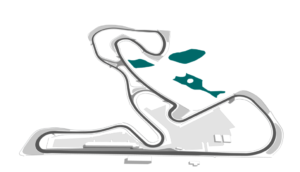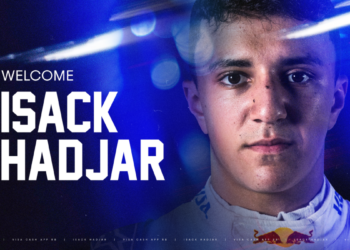On the 5th of September 2021 the Formula One circus returns in Netherlands after 36 years on the legendary Zandvoort circuit, that has hosted all the 30 editions of the F1 GP of Netherlands from 1952 to 1985). Expectations are high for this coming back of the pinnacle on motorsport on a renovated track that will see around 70,000 spectators supporting the local hero Max Verstappen on the Red Bull Racing Honda currently second in the World Standing at 8 points of the leader Lewis Hamilton on Mercedes. The show is granted: be ready to be surprised!
A new ‘old-school’ circuit
In a world made of tracks designed by computers and less personality, the circuit together with Dromo have succeeded to empower a strong soul into the historical track of Zandvoort. Jarno Zaffelli, the Italian engineering company specialised in racetrack design and construction, was the man chosen by the circuit management and in particular by Niek Oude Luttikhuis, the track Manager, to make something unique: a new ‘old-school’ circuit.
 Jarno Zaffelli said: “I have always had a special connection with Zandvoort because its former Director, Hans John Hugenholtz, designed Suzuka – one of my favourite tracks – back in 1962. Although he died in 1995 and unfortunately, I haven’t had the chance to meet him in person, I wanted to learn from him, so 5 years ago I visited the track. I was welcomed by Niek Oude Luttikhuis, the track Manager. We did a lap of the track and started to discuss about how this or that corner could be improved. This is how it all started”.
Jarno Zaffelli said: “I have always had a special connection with Zandvoort because its former Director, Hans John Hugenholtz, designed Suzuka – one of my favourite tracks – back in 1962. Although he died in 1995 and unfortunately, I haven’t had the chance to meet him in person, I wanted to learn from him, so 5 years ago I visited the track. I was welcomed by Niek Oude Luttikhuis, the track Manager. We did a lap of the track and started to discuss about how this or that corner could be improved. This is how it all started”.
Four years later, as the idea to host a Formula One race became real, Jarno Zaffelli was called to update the track. “With Jarno it was the perfect match because we were sharing the same philosophy”, stated Niek Oude Luttikhuis, the track manager. “We wanted to do something innovative, but in the old-school style. This was the main brief. This vision was supported by FOM too”.
A rollercoaster feeling
“We like to design tracks that reflect the feeling and the perception that you get when you drive. We are driven by the desire to translate into straights, corners, curbs and bankings the adrenaline of a lap. Our philosophy is to design a track that is perceived as a big challenge and scare the drivers. Then of course they have to be objectively safe and in this the FIA is of paramount support in assessing our calculations. We want a rollercoaster effect”, asked the circuit management. “We are the right guys” answered Dromo team, “the challenge was to do this, enhancing the soul of the existing track”.
The banking
Zandvoort is now well known for the bankings. The banked corners started by an idea of Niek Oude Luttikhuis, the track manager, to solve the FIA’s request to have a longer straight to create an opportunity to overtake. An extension of the main straight was not possible because it would have impacted on one side with the Natural Park Natura 2000 and on the other with holidays’ houses. “The idea to have a gentle curve was not effective because the corner speed of the cars was too fast and at the end of the corner, the F1 lateral acceleration in the last corner was over 2,5 G and the DRS could not be open”, explained Zaffelli. “The horizonal forces of the car were the key, so Niek came up with the idea to explore the feasibility to reduce the forces by inclining the track, up to a point so that the lateral acceleration was below the 2.5 G”.

So the third dimension might be the solution. “According to the FOM vehicle dynamic simulations, we had to do an inclination of at least 15 degrees in that corner.” Jarno concluded; “FIA was going to approve it if we could prove that was possible to be designed and built properly.”
But how can the banking be designed and built? Together with KWS, the building company, Dromo studied all the technical details, including the formula of the “FlyingDutch”, the name of the bespoke asphalt mix of Norwegian stone and Shell bitumen that they created to meet the characteristics of the Zandvoort’s sand, the cold temperatures, the strong winter winds and the stress of the F1 cars, suitable to pave the bankings with the available machines. It was a strong collaboration between the parties. The “extension” of the main straight was done by modifying Turn 14, the last corner. The wide angle and the banking with up to 18 degrees of elevation (34%) creates in fact an extension of the main straight. According to Dromo’s calculation, it will anticipate of 340 metres the point where the Formula One drivers can go flat out, transforming the actual 678 metres in a potential 1 km straight. This will allow an overtaking point at the braking of Turn 1, the famous Tarzan. Thanks to the long T14 there could also be photo-finish arrival.
“The feeling of the banking is amazing, it’s like accelerating on a side of dune”, confessed Jarno Zaffelli who had to face the technical challenge that the FIA guidelines state that no banking should be over 10%. All in all, the track was rebuilt in three Dutch winter months. A record.
 The third dimension
The third dimension
What is special about Dromo’s philosophy of designing a track is how they take the third dimension into consideration while designing the track along with all the surroundings. According to their measurements, at Zandvoort, only 2 out of the 14 corners can now be considered “flat”, while all the other corners are characterized by the banking, from a minimum of 15° to 18° (34%) in the very long Turn 14 and from a minimum of 4.5° to a maximum of 19° (35%) in the external side of Turn 3”.
A challenge for the drivers
The drivers, and the fans too will be surprised and amazed. Zandvoort dared to do something that nobody did before. The banking alone are not enough to grant the show. How to make the inclinations safe but demanding, formidable to drive, fun to watch, were one of the main challenges. The solutions that were adopted vary from the combination of different transitions, that grant the suitable enter and exit of the corner but very demanding for the drivers, to the use of multiple variable bankings angle within the same section of the curve. This occurs for example in the Hugenholtz complex, one of the most difficult points of the track, where at turn 3, the inner part of the bend has an inclination of about 4.5 degrees, while the outermost part of almost 19, with a bowl cross section, modeled according to the Fibonacci Series. The whole transition between the lateral inclination and the altimetry profile, is making the real difference between a usual corner and the experience the drivers will face, giving the driver the impression to surf a giant wave. There is nothing comparable in any other F1 circuit in the world.
Redazione MotoriNoLimits






